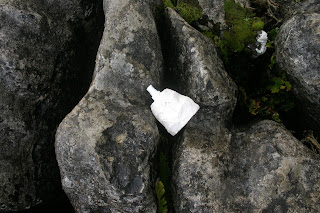Packard's Hidden Needs in relation to Religion & Practical Project:
Firstly, it sells the need of 'Roots'. We are an organism existing on Earth, our very existence is natural. Since the product is made of holy rock from various religious locations, this relates back to the need of Roots, as we are reminded of our organic state, our habitat; the Earth. The product connects the consumer to this natural feeling, and ensures that they are purified. The need of Roots can also relate back to our families, home land and anything involving our heritage. Religion is as Marx suggested part of the superstructure, and is another institution which transmits values just like the family and education system, producing the need for roots to be replenished and the feeling of holding onto our heritage quenched.
Many individuals are unable to achieve a deep level of emotional security, and will continue to actively seek this out. Brands promise this in the form of comfort and happiness, eradicating bad or guilty feelings. In conjunction with my project, Holy Water enables the consumer to feel comfort and composure in knowing that sins are forgiven and they are pure through the use of the product. According to Packard’s needs this is the selling of ‘Emotional Security’.
Selling ‘Reassurance of Worth’ is achieved through the consumer being accepted by God through repentance, and achieving a secure relationship with their faith. The product promises to ‘cleanse’ the user of all sin, giving them purpose and worth in the eyes of their faith as they no longer carry any sin. Individuals desire reassurance that we are of value and are ‘good’, and advertising provides this through informing the consumer they are doing the right thing, in this example, asking for forgiveness is the correct thing to do. This need is prevalent within advertisements for charities in a broad sense, as they make the individual's sense of worth increase by the promise that they are doing something good.
Holy Water also provides the need of ‘Ego Gratification’. Repenting gives the consumer a feeling of praise, that they are valued for recognising sin. This is especially prevalent in the online platform within the advertising campaign in the tone of voice which is used to praise the user for ‘repenting’, and encourages them to be closer to God, and to follow a righteous path - to become more valued and 'Good' rather than hold onto sin.
The need for 'Love Objects' originates from the feeling we had as a child, giving love to pets and toys. As we age, this love is transmitted onto other gadgets and products, or other attractive individuals feature within the adverts to entice the customer. They may have an internal dialogue of 'if I buy this cosmetic product, I will be loved by attractive men/women, I will be desired" "I will have friends". Adverts play to the needs of the individual craving love and affection by family, friends and partners. Within the Holy Water campaign, the love object is simply God - the being that can provide all the love the individual will ever need if you simply cleanse and purify yourself by using the product. Mary and Jesus are also icons & 'love objects' within the campaign.
Perhaps the most interesting of all Packard's hidden needs discussed within his text, is the selling of 'Immortality'. This is usually achieved by banking companies, insurance, age defying products. No one likes the idea that one day they will disappear, and are frightened by the thought of obliteration. Religion comforts the individual that there is in fact life after death; the prospect of heaven and the afterlife with God. Through the Holy Water product, this is reinforced by the idea that by using the product, the individual is always free from sin and will achieve eternal life.
References
COLE, N.L. (2016) Definition of base and superstructure core concepts of Marxist theory. Available at: http://sociology.about.com/od/Key-Theoretical-Concepts/fl/Base-and-Superstructure.htm (Accessed: 27 December 2016).
PACKARD, V. (1980) The hidden persuaders. Pocket.



















































